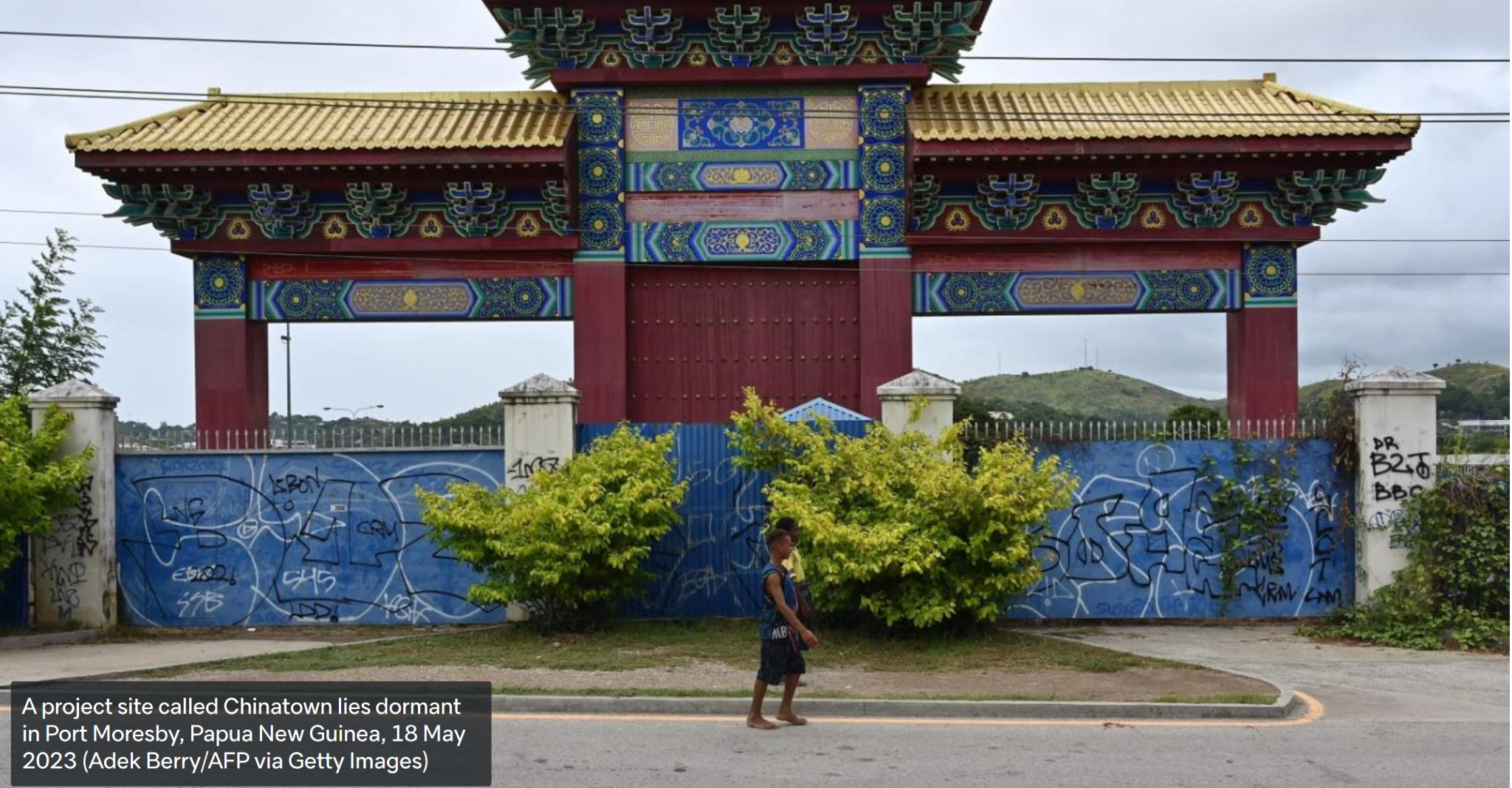There is a building spree going on in our neighbourhood as Pacific Island countries leverage geopolitical rivalries to fill a huge gap. A rough estimate is that the region needs about $3 billion a year out to 2030 to meet its need for critical roads, ports and telecommunications infrastructure. Added to this are the mounting costs of climate disasters. Available finance is growing, but needs are growing faster.
Pacific Island countries cannot go it alone, with their struggling small economies hit hard by Covid-19 lockdowns and climate events. The most recent update to the Lowy Institute’s Pacific Aid Map is out this week. The findings illustrate there is a race for influence via infrastructure investment which is intensifying. Over the last few years, there has been additional investments via the Australian Infrastructure Financing Facility for the Pacific and multilateral banks, in addition to the significant funding from China.
The Pacific’s traditional development partners and the multilateral development banks are working hard to help fill the yawning infrastructure gap, and to balance China’s influence in the region.
Aid to the Pacific has never been higher, and most of the increase has come in the form of loans, largely for infrastructure. Australia remains the largest development partner in the region but there have been big jumps in lending from others; the World Bank expanded their program six-fold between 2012 and 2022.
Geopolitical competition remains intense. China has ramped up efforts with increasing development finance for Pacific roads, parliament houses, ports and telecommunications since 2008. Many Pacific Island countries signed up to the Belt and Road Initiative, the Chinese “freight train for development”. But recent data from the Pacific Aid Map shows that this funding is diminishing, and it can be more expensive than other concessional finance such as from Japan, the Asian Development Bank and World Bank.
The Pacific’s traditional development partners and the multilateral development banks (MDBs) are working hard to help fill the yawning infrastructure gap, and to balance China’s influence in the region. In 2021, development partners such as Australia, Japan, New Zealand and the European Union provided a combined 38% of official development finance for infrastructure to the region. MDBs are bank-rolling about 40% of infrastructure investment (see figure).
China’s infrastructure finance is very visible in big projects, but amounts are modest in comparison, sitting on about 15% of all infrastructure development finance.
Australia has increased its aid to record levels, with more going to infrastructure. The Australian Infrastructure Financing Facility for the Pacific (the unpronounceable AIFFP) has $4 billion at its disposal to invest – with $1 billion available for grants. At the 2023 US–Pacific Islands Summit last month, the Americans pledged an additional $40 million for Pacific infrastructure. So, infrastructure funding is growing, but still the lion’s share is via loans and these will have to be carefully managed to minimise debt distress.
Beyond infrastructure debt management, there are other challenges to ensure quality outcomes – projects that are built well, maintained and climate resilient. At a recent conference on Pacific infrastructure investment in Brisbane, the most consistent calls from Pacific delegates were for climate resilient infrastructure, more local jobs and procurement to boost economic opportunities, and simplified processes. They want a change from the “build and bolt” of the past in which few skills or maintenance capacity is left behind.
Expanding Pacific infrastructure investment creates social and economic value because it is the foundation of economies and societies.
Pacific countries continue to call for more financing for climate resilience – a call we have been hearing for decades. But in this time of geopolitical contest, more are listening. Australia’s most recent International Development Policy will increase climate investments and ensure at least half of all new projects over $3 million have climate change objectives by 2024-25, and 80% by 2028-29 – that includes infrastructure projects. And the MDBs such as the World Bank and Asian Development Bank are strengthening their social and environmental assessments of new projects and safeguards. But can this change practice?
A major challenge for delivering quality infrastructure in the region is weak oversight from contract managers. The expectation that the country taking out the project loan has the resources and capacity to manage the contract is optimistic in Pacific countries, with very small bureaucracies and some ranking high on global corruption scales. If we want better and more sustainable results in the Pacific, it is not just about providing funds for infrastructure, it is about the partnerships we forge to better deliver quality outcomes.
In the words of US Secretary of State Antony Blinken, we want to encourage a “race to the top”. Chinese state-owned enterprises often win big contracts from MDBs, sometimes delivering quality, but there is also evidence of low-ball bidding for contracts and poor project quality. If we want more development partners to compete and win contracts in these remote and small economies, we must provide support.
Margins are tight in small Pacific Island countries; in some cases more grant funding will be needed to make infrastructure investments viable. Those contractors already successful in the Pacific emphasise the value of pre-bid briefings, clear selection criteria, place-based knowledge, and resources to enhance local capacity. Much could also be done to simplify the bidding processes to reduce the costs and red tape of getting in the game. Good project management, often requiring technical assistance to Pacific countries, is critical so those entering the market know what is expected and how to cost it.
Expanding Pacific infrastructure investment creates social and economic value because it is the foundation of economies and societies. Having a greater and more visible presence in the Pacific can win influence but, more importantly, well supported it can nurture productive and enduring partnerships. It is not just what you build, it is how you build (and maintain) it.


